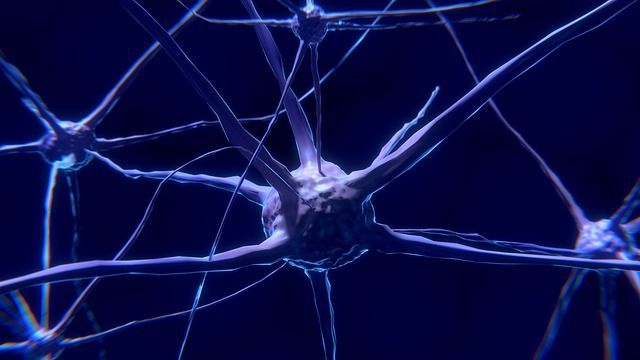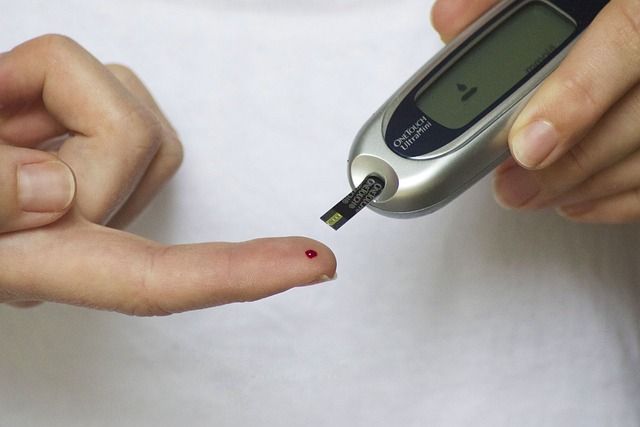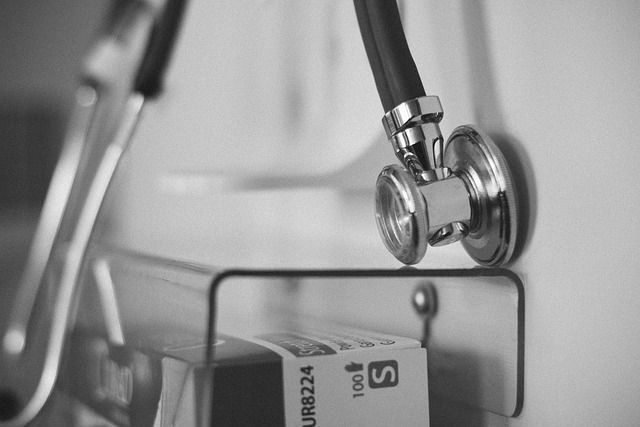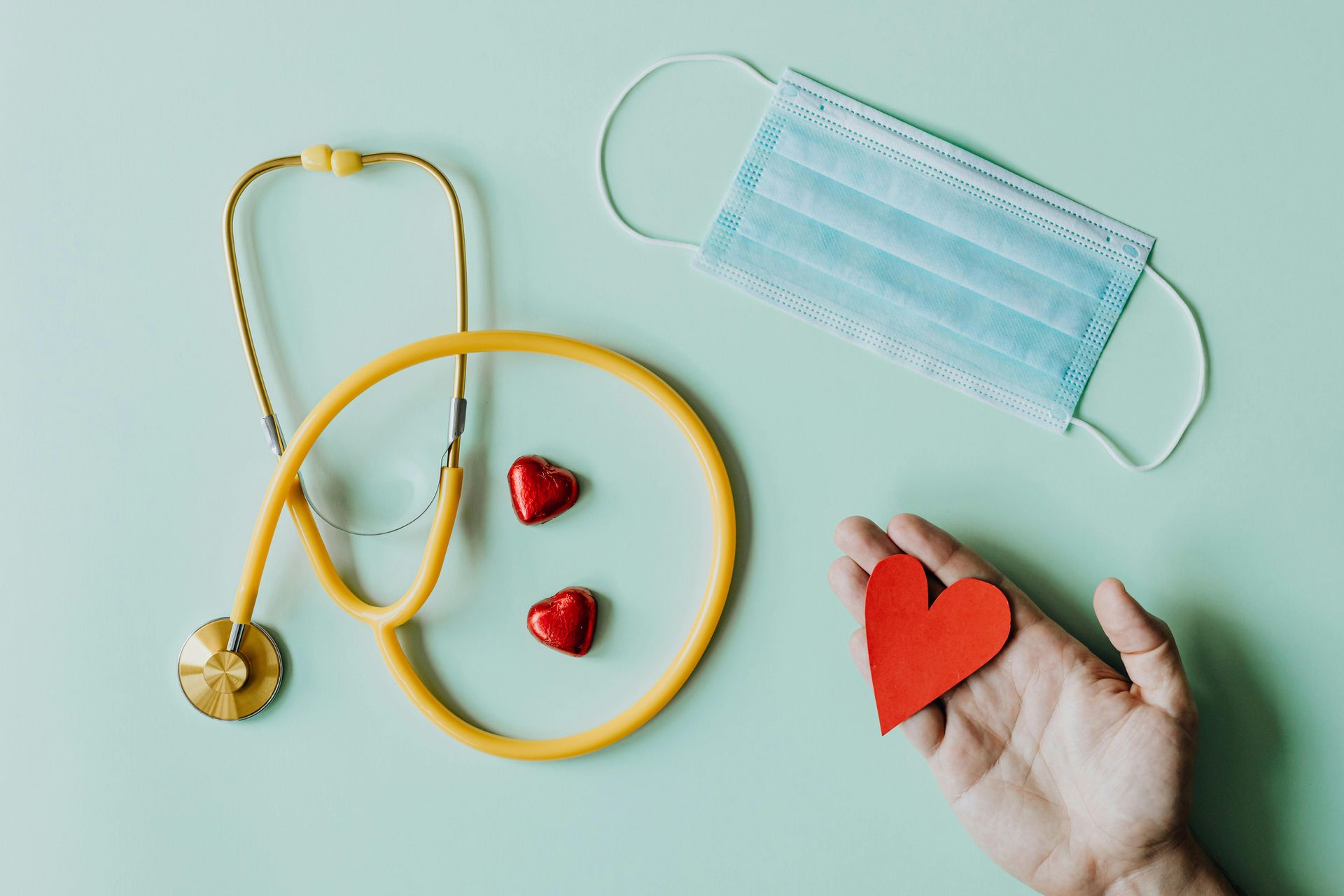Transform Your Health: The Power of GLP-1 Injections for Effective Weight Loss
Purported weight loss techniques are plenty, but few are as effective as treatment with GLP-1 receptor agonists. GLP-1 is a hormone that is naturally produced by the body during food intake, and it is responsible for several important functions in the digestive system. Studies show that administering GLP-1 injections provides key benefits that can aid in both appetite control and successful weight loss.
Semaglutide and liraglutide, two compounds that bind to GLP-1 receptors and mimic the role of the hormone in the digestive system, were approved by the FDA as a treatment for weight loss in 2014. This article will explore how GLP-1 injections work to promote effective weight loss, the potential side effects of treatment, and who might be eligible for a prescription.
For a professional consultation, contact Kind Health Group today. We can help you to integrate healthy lifestyle changes alongside treatment with GLP-1 injections so that you can achieve your weight loss goals most effectively.
Glossary
| Introduction to GLP-1 and its Role in Weight Loss |
| Mechanism of Action |
| Benefits and Efficacy |
| Potential Side Effects |
| Patient Eligibility and Contraindications |
| Lifestyle Integration |
| Conclusion and Next Steps |
Space

Introduction to GLP-1 and Its Role in Weight Loss
GLP-1 (Glucagon-Like Peptide-1) injections are a type of medication designed to help individuals manage their weight by targeting the GLP-1 receptor in the body. As one of the digestive system’s essential hormones, GLP-1 plays a crucial role in regulating blood sugar levels and appetite.
There are several kinds of GLP-1 injection, with semglutide and liraglutide being approved by the FDA for weight loss treatment. The injections work by mimicking the action of natural GLP-1 in the body. This increases feelings of fullness, slows the process of emptying the stomach, and allows patients to reduce their food intake. Another major benefit that GLP-1 injections can provide is that they help to improve glycemic control, and some studies have also found positive effects on cardiovascular health.
GLP-1 is typically prescribed either to individuals who have been diagnosed with obesity, and who have not yet achieved sustainable weight loss through diet and exercise alone, or to patients with type-2 diabetes. They should be used as part of a comprehensive weight management program that includes healthy lifestyle changes. Combined with a cleaner diet and more regular physical activity, GLP-1 can help to produce optimal results for weight management.
It's important to note that GLP-1 injections are prescription medications and should only be used under the guidance of a healthcare professional. They may not be suitable for everyone, and potential side effects should be discussed with a doctor before starting treatment. Since GLP-1 injections are not a standalone solution to maintain weight loss, they should always be used in conjunction with healthy lifestyle changes for optimal results.

Mechanism of Action: How GLP-1 Injections Work to Achieve Weight Loss
GLP-1 injections mimic the effects of the GLP-1 hormone which is produced naturally by the body during ingestion. GLP-1 receptors are found all over the body, and GLP-1 agonists bind to these receptors to mimic their function in the digestive system. In addition to slowing the stomach emptying process, GLP-1 injections regulate insulin secretion, improve glycemic control, and reduce appetite.
GLP-1 injections can be especially beneficial for patients with type-2 diabetes, and they can provide significant weight loss results when combined with healthy lifestyle changes. This section will explore how the medication works with the body to achieve those results.
Slowed gastric emptying
The GLP-1 hormone slows down the emptying of the stomach, which can lead people who take GLP-1 injections to feel more full without increasing their food intake. In short, GLP-1 reduces appetite by stimulating insulin secretion from cells in the pancreas, which has had notable effects on gastric emptying during human testing.
Increased insulin secretion
A cluster of cells found in the pancreas, known as the islets of Langerhans, have been found to contain GLP-1 receptors. Evidence shows that GLP-1 injections stimulate this cluster of cells, which results in the secretion of insulin to mimic the body’s response to elevated blood sugar levels.
Increased insulin secretion helps to keep blood sugar levels lower after meals, which can improve glycemic control in individuals with diabetes. While there is no direct correlation between higher insulin secretion and faster weight loss, more insulin in the body helps to lower blood sugar and avoid any adverse effects of chronic hyperglycemia.
Improved glycemic control
One of the primary functions of GLP-1 in the body is that the hormone inhibits the release of glucagon, which has the role of converting food into blood sugar so that it can be used as energy. By inhibiting glucagon secretion, GLP-1 injections help to prevent excessive glucose production by the liver, thereby reducing the amount of glycogen that gets stored in the body after meals.
GLP-1 injections can therefore improve glycemic control for people who are overweight. Lower glucagon secretion means reduced glycogen storage, which in turn reduces the amount of glucose available to be converted into energy. On balance, this helps to regulate blood sugar levels and maintain weight loss when combined with healthy lifestyle improvements.

Central nervous system effects
As mentioned, GLP-1 receptors can be found all over the body. One of the primary benefits of GLP-1 injections is the stimulation of satiety in the brain. Mimicking the body’s natural response to food ingestion allows the brain to send a signal to the body that it is no longer hungry, which increases feelings of fullness and helps people to regulate their appetite.
Research by L van Bloemendaal et al found that “glucagon-like peptide 1 (GLP-1), along with several other gut-derived hormones, has been identified as a player in the regulation of feeding by relaying meal-related information on nutritional status to the brain.” The central nervous system effects of GLP-1 injections have been found to help people to lower their food intake, which can aid in weight management as a result.
Cardiovascular effects
GLP-1 receptors are widely distributed in the blood vessels, so another major benefit of GLP-1 injections is that they can have direct cardiovascular benefits. Stimulating GLP-1 receptors, and the resulting impact that this has on glucagon secretion and appetite control, helps to improve heart function by reducing blood pressure.
Benefits and Efficacy
GLP-1 injections are FDA-approved treatments for diabetics due to their positive correlation with glucagon regulation, appetite control and weight loss. Clinical trials have shown positive effects from taking GLP-1 injections, including improved glycemic control, slowed gastric emptying, and reduced appetite.
The effectiveness of GLP-1 injections for weight loss
Ingesting food causes a complex chemical reaction in the body that involves correspondence between major organs in the gut and the brain’s central nervous system responses. One of the key players in this process is glucagon-like peptide 1 — the hormone responsible for insulin secretion and glycemic control.
Insulin secretion and glucagon secretion work in tandem to moderate the body’s blood sugar levels. When glucagon is produced, the body stores glycogen which can later be converted into glucose. This glucose (sugar) is transported around the body by the blood for energy. When the body’s blood sugar levels are too high, the body sends a signal to the pancreas to produce more insulin, which in turn neutralizes glucose in the bloodstream.
Blood sugar regulation relies on a direct line of communication between organs in the gut and the blood vessels, and the GLP-1 hormone acts as the body’s messenger. GLP-1 receptors are found in the brain, in the blood vessels, in the pancreas, and many other areas of the body, meaning that they play an important role in the digestive system and the process of converting food into energy stores.
The core reason why GLP-1 injections can work to promote effective weight loss is that they mimic the body’s natural response to food ingestion. Taking the hormone informs the body that food has been ingested, triggering key functions such as glucagon secretion, insulin secretion, and the brain’s messaging system that makes people feel full after a meal.
The effectiveness of GLP-1 injections for treating type-2 diabetes
Type-2 diabetes is a health condition that affects how the body uses sugar as energy. People who suffer from type-2 diabetes typically have higher glucose levels in the bloodstream, owing to faulty glycemic control.
GLP-1 injections help regulate glycemic control by stimulating insulin secretion and inhibiting glucagon release. Patients with type-2 diabetes have been found to have reduced postprandial glucose spikes as a result of treatment — which is excessive glucagon production after food has been ingested.
Another key benefit of GLP-1 injections for patients with type-2 diabetes is that it promotes non-hypoglycemic weight loss, unlike other diabetes drugs such as atenolol or propranolol which block beta cells in the pancreas to lower blood sugar levels.
While beta-blockers can sometimes reduce blood sugar too much, GLP-1 injections have been found to
preserve beta cell function. As a result, GLP-1 injections typically do not increase the risk of hypoglycemia and can be seen as a safer option.

Regulating appetite: How losing weight can be achieved by stimulating the central nervous system
Experiments conducted on both rodents and humans over the course of three decades have found a direct correlation between GLP-1 receptor agonists and the regulation of glucose in the bloodstream. Additionally, GLP-1 agonists have been found to stimulate regions of the brain that are involved in the digestion system, mimicking the body’s response to food intake and increasing feelings of fullness.
As stated by L van Bloemendaal et al, “Obesity is the result of a long-term positive energy balance whereby energy intake surpasses expenditure.” Mimicking the body’s natural response to food intake can regulate the first part of this balance.
The brain’s GLP-1 receptors have the role of regulating food intake by signaling feelings of fullness to the rest of the body via the central nervous system. GLP-1 injections, therefore, help to trigger this response mechanism and cause patients to feel more satisfied with reduced food intake.
This appetite regulation helps to achieve a better balance between energy intake and energy expenditure, which can aid in the process of weight loss over time. When combined with healthy lifestyle changes such as a daily exercise routine, GLP-1 injections have been found to increase the speed at which a patient can lose weight by almost 6x (when compared with patients who only integrate healthy lifestyle changes into their routine).
Potential Side Effects
While GLP-1 injections are generally well-tolerated, like any medication, they may cause side effects in some individuals. Some potential side effects of GLP-1 injections include headaches, fatigue, nausea, vomiting, diarrhea, and injection site reactions, along with several additional risks that can affect patients.
This section will cover GLP-1’s associated side effects and discuss the key considerations to make before starting treatment.

Headaches, nausea, vomiting, and diarrhea
Headaches are a possible side effect of GLP-1 injections, although they are generally mild and temporary. Nausea, on the other hand, is one of the most common side effects associated with GLP-1 injections, particularly when treatment starts or when the dosage is increased. This symptom varies in severity, and it usually improves over time as the body adjusts to the medication.
Individuals who suffer from nausea are also known to experience vomiting during the early stages of their treatment with GLP-1 injections. Like with nausea, vomiting typically subsides once the patient has become more accustomed to the treatment.
Diarrhea is another potential side effect of GLP-1 injections, although it is less common than nausea. Patients who experience diarrhea after starting treatment typically find that the side effect is mild to moderate in severity, and it also tends to improve over time.
Injection site reactions and abdominal discomfort
Since GLP-1 is administered as an injection, a potential side effect is redness, swelling, or irritation at the injection site. This can be mildly uncomfortable for the patient. One method for reducing the probability of experiencing injection site reactions is to administer the injections in different areas of the body, as opposed to repeatedly targeting a single injection site.
Abdominal discomfort, meanwhile, is another mild side effect of GLP-1 injections. Since the GLP-1 hormone is primarily a digestive system hormone, GLP-1 receptors are concentrated in the abdominal area. As a result, individuals may experience bloating or stomach pain after administering their injections.
Hypoglycemia: Low blood sugar levels
Hypoglycemia is a condition where blood sugar levels are lower than the standard range. In patients with type-2 diabetes, where blood sugar levels are regularly too high, a common treatment is to improve glycemic control with a view to reducing the amount of glucose present in the bloodstream.
GLP-1 injections are known to be a safer alternative to other diabetes drugs as they preserve beta cell function in the pancreas, which allows the body to continue to produce glycine naturally. While GLP-1 injections themselves do not typically cause hypoglycemia, they may increase the risk of hypoglycemia when used in combination with other diabetes drugs such as insulin or sulfonylureas.
Hypersensitivity reactions
GLP-1 injections may cause allergic reactions in certain patientes, although it is considered to be one of the rarest side effects of the treatment. Hypersensitivity reactions such as a rash, itching, or hives, can affect patients and they are usually mild in terms of their severity.
Severe allergic reactions, including anaphylaxis, are extremely rare but they can occur. For patients suffering from hypersensitivity reactions after administering a GLP-1 injection, it’s best to contact a healthcare professional as soon as possible.
Pancreatitis
Pancreatitis, or inflammation of the pancreas, has been identified as a possible side effect of GLP-1 receptor agonists. Symptoms of pancreatitis include severe abdominal pain, nausea, and vomiting. For patients who experience severe side effects from GLP-1 injections, it’s important to act fast and receive medical attention immediately.
The importance of medical supervision when beginning treatment to lose weight
It’s essential for patients starting their treatment to familiarize themselves with the potential side effects of GLP-1 injections and to discuss any concerns with their healthcare provider. Most side effects are mild and temporary, and they often improve as the body adjusts to the medication. However, more severe reactions need to be addressed as quickly as possible by a medical professional.

Patient Eligibility and Contraindications
GLP-1 injections are typically prescribed for individuals who meet certain criteria and have specific health conditions, including those related to body weight such as obesity and type-2 diabetes. Additionally, there are certain contraindications and major considerations that may make a person ineligible to receive treatment.
Patient eligibility
It's important to note that the decision to prescribe GLP-1 injections should be made by a healthcare professional based on individual health status, medical history, and treatment goals — such as a target for weight loss.
Some of the primary health conditions that are considered to be eligible for GLP-1 injections are obesity, type-2 diabetes, cardiovascular risk factors, and poor glycemic control. Some associated health conditions may also contribute to patient eligibility.
People with obesity or who are overweight
GLP-1 injections are most commonly prescribed for people with a body mass index (BMI) of 30 or higher. This is because the treatment has been found to contribute towards healthy weight loss by slowing down gastric emptying, increasing insulin secretion, and improving glycemic control, as well as by increasing feelings of fullness through the central nervous system.
Individuals with a BMI of 27 and above may also be considered for GLP-1 injections, which would be prescribed alongside a comprehensive weight management plan that includes a daily diet and exercise routine.
People who have Type-2 Diabetes
GLP-1 receptor agonists are an FDA-approved treatment for type-2 diabetes due to their ability to reduce the amount of glycine that is produced in the pancreas and manage blood sugar levels.
Type-2 diabetics typically suffer from hyperglycemia, where too much glucose is found in the bloodstream. By reducing the amount of glycine that is produced by the body, research shows that GLP-1 injections are a safe and effective method for blood sugar management.
People with cardiovascular risk factors
People with high blood pressure or with a history of cardiovascular disease may be well suited to receiving treatment. Due to the potential cardiovascular benefits, such as reducing blood pressure, GLP-1 agonists can be prescribed to those with an increased risk of developing cardiovascular complications.
People with Associated Health Conditions
Patients who suffer from obesity or have a weight-related health condition such as high cholesterol, sleep apnea, or joint pain, may also be eligible for GLP-1 injections. GLP-1 injections are an effective weight loss treatment, and people who suffer from weight related conditions can integrate the injections into comprehensive weight loss plans for optimal results.
Contraindications
It's important to be aware of the significant contraindications when considering GLP-1 receptor agonists as a treatment for weight loss. Personal or family history can play a crucial role, and several outstanding health conditions are not suitable for GLP-1 injections.
A history of pancreatitis
A potential side effect of GLP-1 receptor agonists is that they can increase the likelihood of a patient experiencing pancreatitis. Studies found that GLP-1 agonists made patients significantly more likely to experience pancreatitis when compared with alternative weight loss medicines such as bupropion-naltrexone.
An experiment that was conducted to compare the prevalence of pancreatitis in patients who took a controlled sample of GLP-1 and a controlled sample of bupropion-naltrexone, found that there is an adjusted hazard ratio (HR) of 9.09. To demonstrate, an equal likelihood of pancreatitis occurring would give the two drugs an adjusted hazard ratio of 1.
Type-1 diabetes
Patients who have type-1 diabetes should not use GLP-1 receptor agonists, as they are known to increase insulin secretion and reduce glycine production. Type-1 diabetics suffer from severe hypoglycemia, where blood glucose levels are too low. While GLP-1 injections can regulate glycemia production and improve blood sugar levels for type-2 diabetics, they can cause significant complications for patients with type-1 diabetes.

Lifestyle Integration
Peer-reviewed studies show significant benefits with regard to administering GLP-1 injections for weight loss, as they can help to suppress appetite by slowing gastric emptying and increasing feelings of fullness. However, by integrating GLP-1 injections into a healthy lifestyle, patients can maximize their chances of achieving weight loss goals.
Consult with a Healthcare Provider
Before starting GLP-1 injections, it is essential to consult with a healthcare provider to discuss your body weight goals, medical history, and any potential side effects or concerns. Your healthcare providers can provide personalized guidance on how to integrate GLP-1 injections into your treatment plan.
Follow a Balanced Diet
Adopt a balanced and nutritious diet rich in fruits, vegetables, lean proteins, whole grains, and healthy fats. Integrating healthy foods into your daily routine can help to create a calorie deficit, where more calories are expended than consumed each day. GLP-1 injections can aid in the process of achieving a calorie deficit, but sticking to a comprehensive diet plan will ensure that food intake remains controlled.
Engage in Regular Physical Activity
Incorporate regular physical activity into your routine. This helps to increase energy output which, along with weight loss medications and healthy foods, is a primary factor in achieving a calorie deficit.
Some of the most effective exercise routines for optimal health are brisk walking, jogging, cycling, swimming, and strength training exercises. Aim for at least 150 minutes of moderate-intensity aerobic activity or 75 minutes of vigorous-intensity activity per week.
Small, consistent action and regular follow-ups
Body weight goals are most likely to be achieved by small, consistent action over a prolonged period of time. It’s essential to find a diet and exercise plan that you can incorporate into your daily routine, and scheduling regular follow-ups with your healthcare provider can help you to monitor your progress, discuss any challenges or concerns that you might have, and make adjustments to your treatment plan as needed.
Conclusion and Next Steps
GLP-1 injections, initially designed to treat patients with type-2 diabetes, have since been found to have significant weight loss benefits. Both semaglutide and liraglutide are now FDA-approved treatments for weight loss owing to several notable effects:
- Slowing gastric emptying
- Improving glycemic control
- Increased insulin secretion
- Reducing appetite
- Lowering blood pressure
It's important to remember the significance of diet and exercise in achieving a calorie deficit and losing weight; however, GLP-1 injections are proven to be an effective supplement that can aid chronic weight management conditions.
Our team can provide a thorough examination of your requirements, provide you with information about costs, and provide a prescription to eligible patients. We can also map out a comprehensive health and wellness plan that can supplement the treatment for optimal results.
To learn more about Kind Health's revolutionary GLP-1 injections, our pricing, and how our GLP-1 injections could help you achieve your weight loss goals, contact Kind Health's office today by completing our webform below or call our office directly at: 760-701-5463.

Meet the Author
You might also enjoy:








